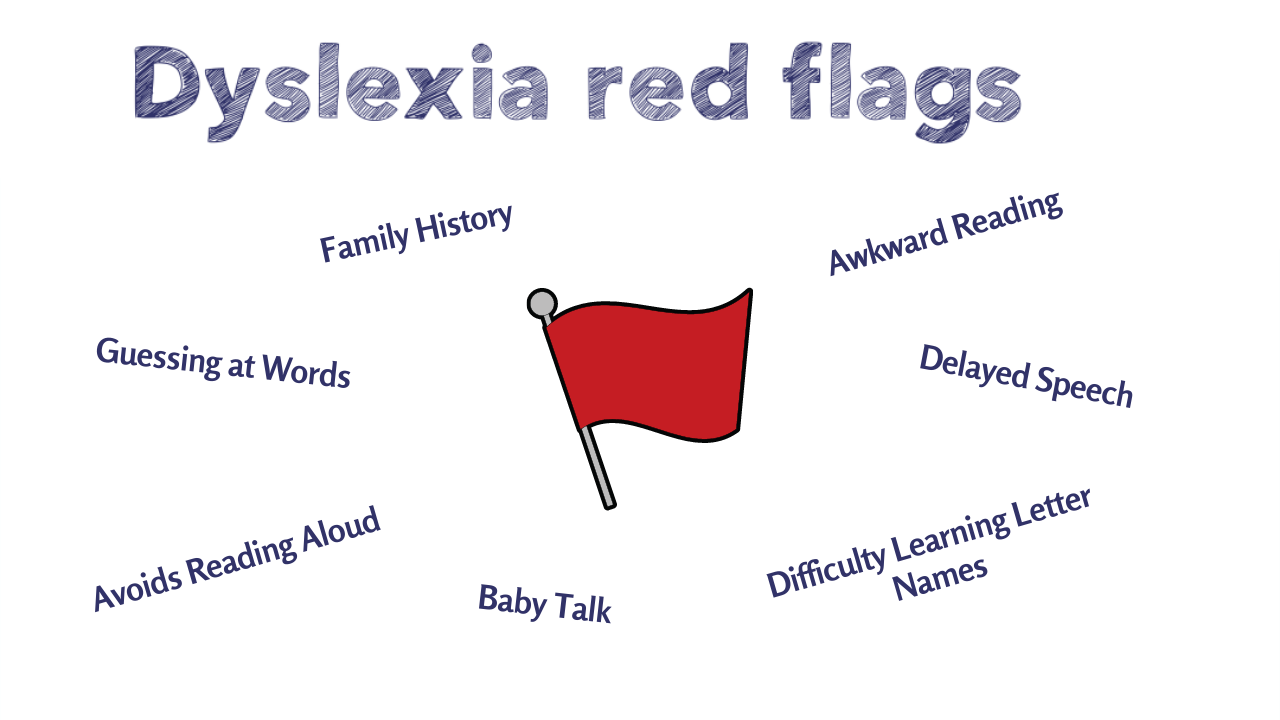Dyslexia Red Flags You Don't Want to Miss

Hi friends! Every time you show up for your students, speak up for accommodations and spread awareness of dyslexia, you are making an impact. While we want to promote dyslexia awareness all year long, October is dedicated to Dyslexia Awareness Month. This week, I want to explore a few ways that we can become informed about what to look for as a red flag that might indicate a child is being impacted by dyslexia.
We know that teacher understanding is critical to our student's success. After all, it is the teachers that teach, not a program. The more we as educators understand dyslexia, how the brain learns, structured literacy, and the research behind best practices for students with dyslexia, the better we can serve our students.

What are Some 🚩Red Flags to Look for in My Student/Child?
Let's first look at some indicators for preschoolers and kindergarteners.

While there are new conversations about beginning early intervention and identification, our system often relies on the "wait to fail" model before testing or providing appropriate interventions. This can have lasting impacts on students' educational and emotional standing. Next, here are red flags to look for in elementary children.

As educators and parents, we must pay close attention to those students who struggle with early signs of reading and language difficulties and offer appropriate resources and interventions to help students minimize their struggle right from the start. This begins with us deepening our knowledge of dyslexia and best practices. Below you will find a list of red flags for older children. We must always observe our students and children in case indicators were previously missed.

We must be more intelligent than our programs, but this doesn't come overnight. It takes time and critical thinking to dive into the collection of research called the Science of Reading and understand the What, Why, and How of reading instruction.
Coming Soon!
The Together in Literacy Podcast!
Yes! Emily Gibbons of The Literacy Nest and I will be your podcast HOSTS!
We aim to spread the word about structured literacy, dyslexia awareness, and the role of social-emotional learning when providing reading interventions. Stay tuned for a link to the first episode.
Emily and I can't wait for you to join us in this exciting endeavor!
I hope this information about looking for red flags in our children and students is helpful. Identifying dyslexia early is important for their success. I hope you will join me in October by spreading awareness of dyslexia. As always, follow me on Instagram where I share more tips and strategies.
I hope you have a great week!
Casey

This information is the intellectual property of @2016 The Dyslexia Classroom®. Do not use or repurpose without expressed permission from The Dyslexia Classroom®. Please email [email protected] for permission, and give The Dyslexia Classroom® an attribution if you use, reference, or quote/paraphrase copyrighted materials. This includes but is not limited to blogs, social media, and resources.



